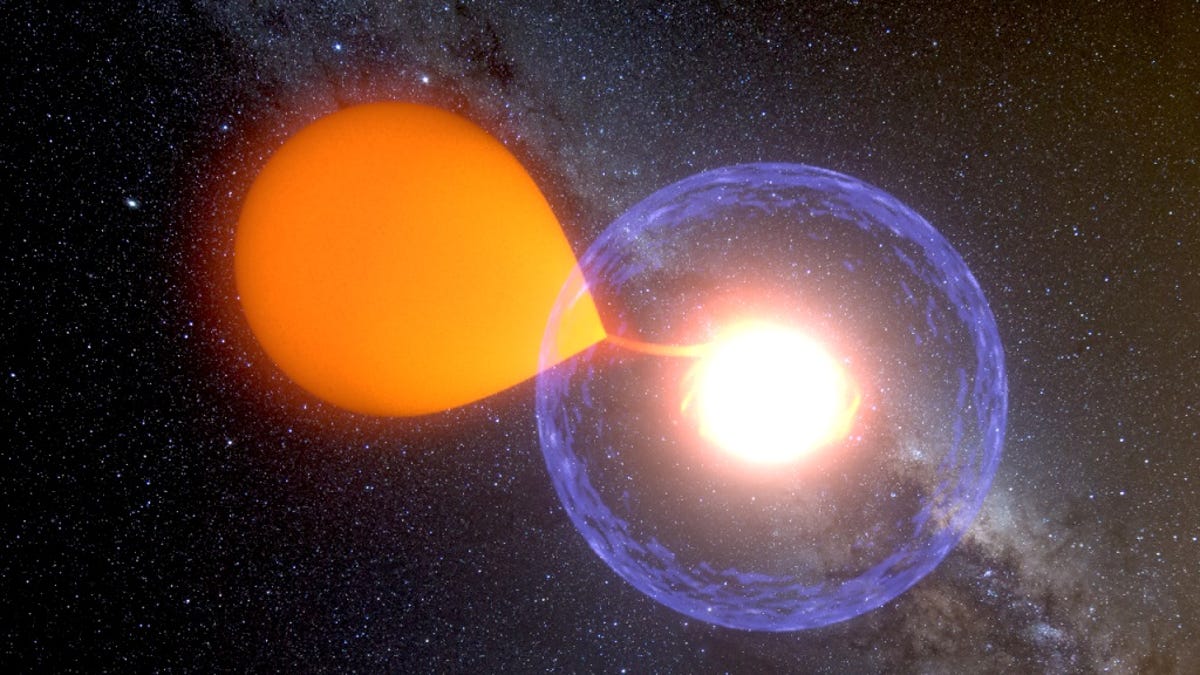Burst of brightness makes rare recurrent nova visible in the night sky
A small star gorging on gas has gone thermonuclear.

Artist's portrayal of a classical nova explosion.
This year's majestic Perseid meteor shower isn't the only spectacular sight in the evening sky this week. A rare recurrent nova is undergoing an outburst, and some sky watchers say it can be seen with the naked eye if you know where to look.
A nova is different from a supernova, which is basically a sort of death spasm for a massive star. A nova, on the other hand, typically occurs when a white dwarf in a binary system sucks up a whole bunch of gas from its larger partner until it reaches a critical mass that triggers a thermonuclear explosion. When a star does this repeatedly, it's a recurrent nova.
There are just seven confirmed recurrent novae in the Milky Way, and one of them is RS Ophiuchi, which is currently putting our whole galaxy on blast.
Recurrent Nova RS Ophiuchi is currently in outburst at magnitude +4.5/+5.0 over the past weekend... the last outburst was 2006. Look for the novae due south at dusk. More to come! pic.twitter.com/m63Ey7dV7P
— Dave Dickinson (@Astroguyz) August 9, 2021
The small star suddenly brightened 600-fold on Sunday, according to Tony Phillips at Spaceweather.com. Observations on Monday show it continued to grow a bit brighter and is still shining.
"At 5th magnitude, the current outburst is visible to the unaided eye, albeit just barely. Binoculars or a telescope will allow you to see it with ease," Phillips writes. "Look south after sunset. Ophiuchus hangs high in the sky just above the better known constellations Scorpius and Sagittarius."
If you miss the show this time, you might get another chance but you'll have to be patient. RS Ophiuchi only has an outburst about once every 15 to 20 years.
Follow CNET's 2021 Space Calendar to stay up to date with all the latest space news this year. You can even add it to your own Google Calendar.

